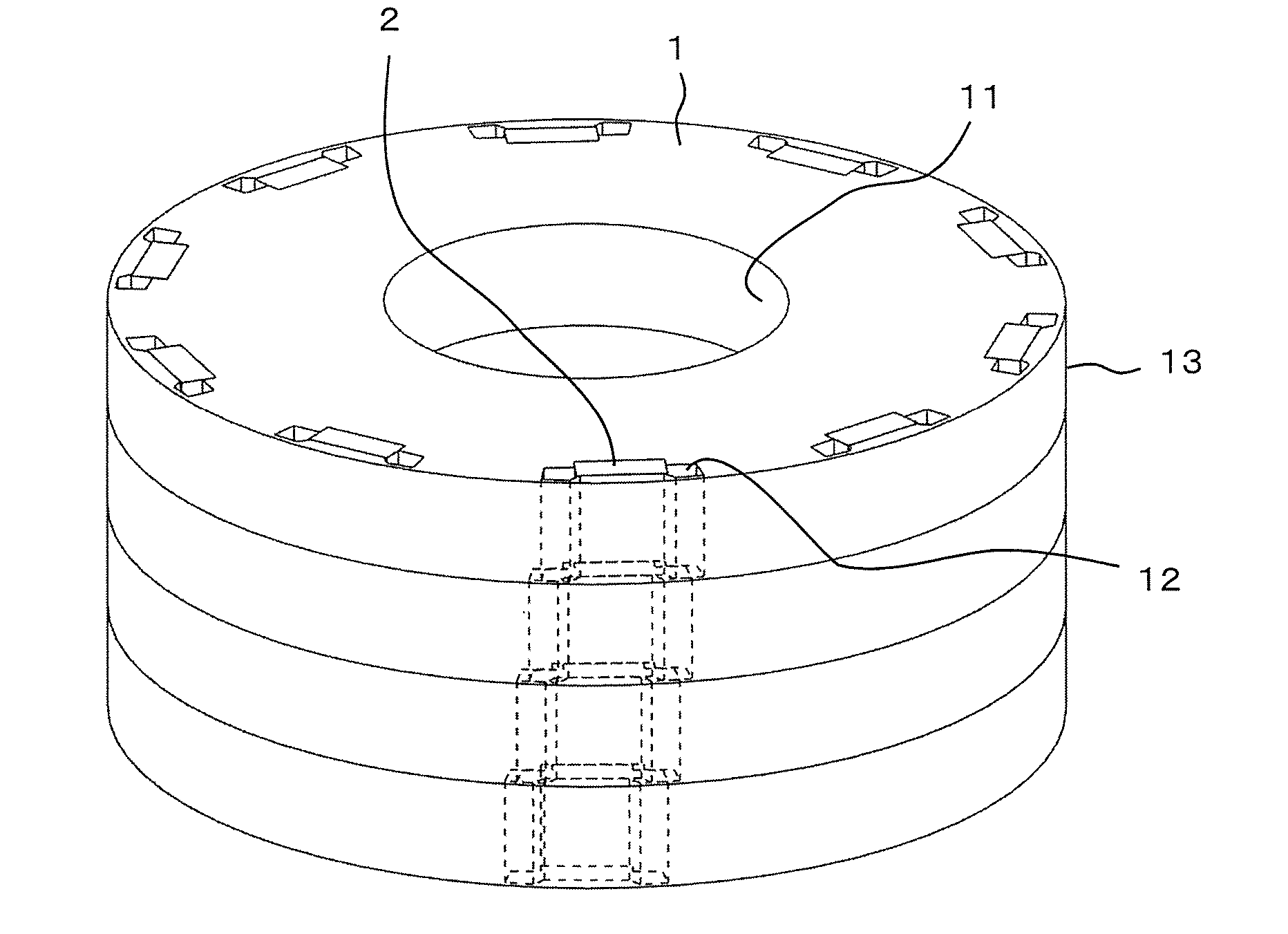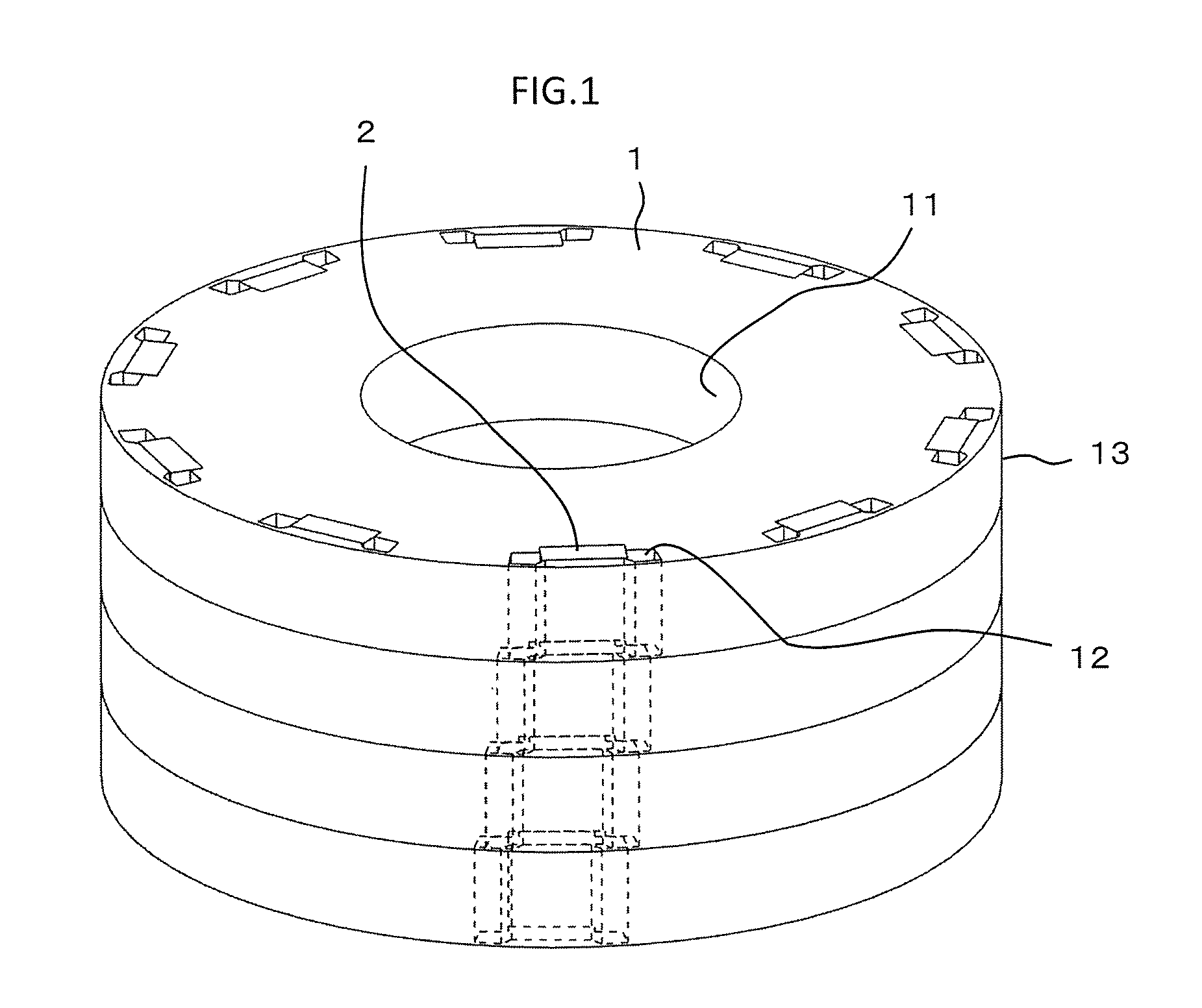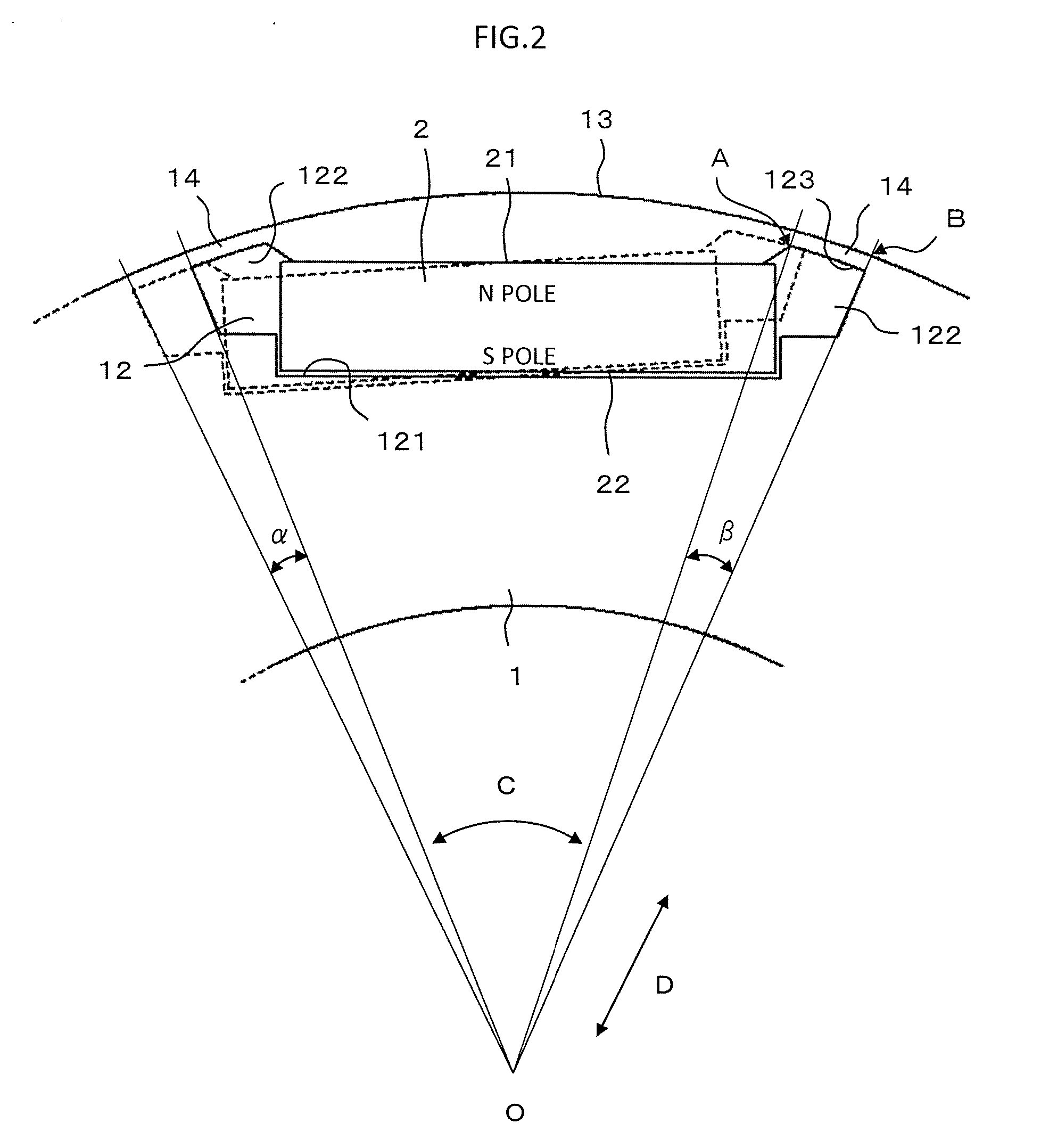Rotating electric machine
a rotating electric machine and electric motor technology, applied in the direction of dynamo-electric machines, magnetic circuit rotating parts, magnetic circuit shape/form/construction, etc., can solve the problems of difficult to obtain the effect of reducing the torque pulsation at a skew angle to be derived theoretically, and the torque reduction of the rotating electric machine becomes significant, so as to suppress the magnetic flux leakage, the effect of reducing the torque pulsation and suppressing the torqu
- Summary
- Abstract
- Description
- Claims
- Application Information
AI Technical Summary
Benefits of technology
Problems solved by technology
Method used
Image
Examples
first embodiment
[0020]FIG. 1 is a perspective view illustrating a rotor according to a first embodiment of the present invention. FIG. 2 is a main-part enlarged view illustrating the rotor of FIG. 1 as seen in an axial direction thereof. In FIGS. 1 and 2, the rotor includes a rotation shaft (not shown), a rotor core 1 formed into an annular shape and rotatable about the rotation shaft, and a plurality of permanent magnets 2 embedded in the rotor core 1.
[0021]A rotation shaft through hole 11 into which the rotation shaft is inserted is formed on a radially inner side of the rotor core 1.
[0022]The rotor core 1 is divided into a plurality of blocks in the axial direction. In this example, the rotor core 1 is divided into four-stage blocks in the axial direction. Further, the blocks of the rotor core 1 are arranged to have a predetermined phase angle therebetween in a circumferential direction of the rotor core 1 so that a stepped skew is formed in the rotor core 1. Each of the blocks is constructed by...
second embodiment
[0034]FIG. 3 is a perspective view illustrating a rotating electric machine according to a second embodiment of the present invention. FIG. 4 is a main-part enlarged view illustrating the rotating electric machine of FIG. 3 as seen in an axial direction thereof. In FIGS. 3 and 4, the rotating electric machine includes a rotor 3, and a stator 4 arranged on a radially outer side of the rotor 3.
[0035]In the rotor 3, a pair of permanent magnets 2 arranged into a substantially V-shape in plan view is inserted into a pair of magnet through holes 12, to thereby form one magnetic pole. A desired number of the magnetic poles are formed by the pair of permanent magnets 2 in the circumferential direction of the rotor core 1. Each of the permanent magnets 2 that form two adjacent magnetic poles is inserted into the magnet through hole 12 so that the N pole and the S pole are inverted. Other components of the rotor 3 are similar to those of the rotor of the first embodiment.
[0036]Coils of the st...
third embodiment
[0047]FIG. 5 is a main-part plan view illustrating a rotating electric machine as seen in an axial direction thereof according to a third embodiment of the present invention. In FIG. 5, in each of the plurality of blocks divided in the axial direction, a circumferential width Wb of the bridge portion 14 is equal to or larger than the circumferential width Wt at the distal end of the tooth 411 of the stator core 41 (Wb≧Wt).
[0048]The circumferential width Wb of the bridge portion 14 refers to a distance between the magnetic pole center-side end A of the bridge portion 14 and the magnetic pole outer-side end B of the bridge portion 14. Other components are similar to those of the second embodiment.
[0049]As described above, according to the rotating electric machine of the third embodiment of the present invention, it is possible to suppress a situation where a magnetic flux generated at the N magnetic pole of each of the blocks sneaks from the circumferential end of the N magnetic pole...
PUM
 Login to View More
Login to View More Abstract
Description
Claims
Application Information
 Login to View More
Login to View More - R&D
- Intellectual Property
- Life Sciences
- Materials
- Tech Scout
- Unparalleled Data Quality
- Higher Quality Content
- 60% Fewer Hallucinations
Browse by: Latest US Patents, China's latest patents, Technical Efficacy Thesaurus, Application Domain, Technology Topic, Popular Technical Reports.
© 2025 PatSnap. All rights reserved.Legal|Privacy policy|Modern Slavery Act Transparency Statement|Sitemap|About US| Contact US: help@patsnap.com



